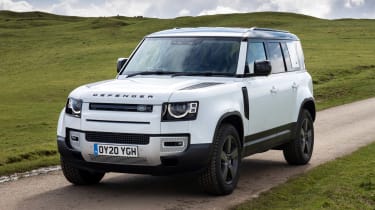Land Rover Defender – design
A clever interpretation of a classic Land Rover design
The element tying all of the Defender’s good points together is its design. There was always a risk when recreating an icon such as the Defender, and in many ways Land Rover has hit the right balance of referencing the original, without becoming a pastiche of retro design.
It was crucial to see design elements such as the completely flat tail, roof lights and subtle, but unmistakable, shoulder line reach the new model intact. But what is more of a surprise is how many design flourishes Gerry McGovern’s team at Land Rover applied.
For those hoping for a more rugged approach to the ultimate off-roader, other reborn off-roader icons such as the G-class and Bronco might appeal more, but it’s clear Land Rover has understood that the bigger customer base lies in designing its Defender with a wider appeal.
If there is one caveat to the Defender’s design, it would be that in certain specifications, and in certain colours, the off-roader design might stray too far from home, looking long, saggy and under-wheeled when in its loading height (which it automatically reverts to when parked if fitted with air springs). The 130 model in particular is a little challenging from some angles due to its long rear overhang.
Thankfully, specifying the V8 engine doesn't turn the Defender into your typical glitzy performance SUV. The design remains largely identical, save for darkened exterior trims and subtle quad-tailpipes.




